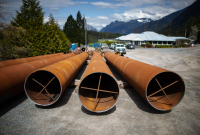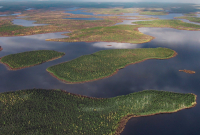Support strong Canadian climate journalism for 2025
The federal government must ensure $2.2 billion earmarked to address violence against Indigenous women and girls goes to organizations in remote areas, not just major cities, witnesses told the Standing Committee on the Status of Women on Friday.
“We need to put ourselves in the communities' moccasins ... (they) are far from urban centres and they may not have direct ties with these federal organizations,” Sen. Michèle Audette, a former commissioner of the National Inquiry into Missing and Murdered Indigenous Women and Girls, told the committee. “It's very rare that they will receive long-term funding.”
Earlier this month, the Native Women's Association of Canada (NWAC) pointed to "the importance of sustainable, long-term funding in order to end the ongoing genocide of MMIWG2S," as outlined in the national inquiry's calls for justice. But a "lack of transparency" on how the money set aside in Budget 2021 is being given to community organizations has "made it challenging to evaluate the federal government’s progress," NWAC said in its annual scorecard for the MMIWG2S national action plan.
Audette also stressed the need for Canada to establish a National Indigenous and Human Rights Ombudsperson and a National Indigenous and Human Rights Tribunal. The ombudsperson must have jurisdiction in all provinces and territories and receive complaints related to Indigenous and human rights violations. When survivors report violence, they often face additional violence at the hands of the police, NDP MP Leah Gazan noted. This process would help survivors feel safe enough to come forward.
“Indigenous women, particularly, experienced violence, even from the very systems that are supposed to protect us. It's hard to build relationships at the end of the gun,” said Gazan.
Two weeks ago, on the third anniversary of the national inquiry report, the federal government released a progress report on its National Action Plan. In Audette’s words: “Not much has been implemented.”
In the fifth and second-to-last meeting studying the link between resource development and violence against Indigenous women and girls, MPs heard from Audette, the Lanaudière Native Friendship Centre’s executive director Jennifer Brazeau and officials from Natural Resources Canada, the Impact Assessment Agency of Canada and Public Safety and Emergency Preparedness.
“As Indigenous women, when we witness these companies coming and destroying our natural areas — which we have a strong cultural connection to, where they're exploiting the nature around us — it has a severe impact,” Brazeau said in her opening remarks.
“Because then ourselves, our own bodies become exploited, too,” she continued, referring to the rise in violence associated with man camps and resource extraction projects where large numbers of workers are flown into remote communities.
Kimberley Zinck, director-general of reconciliation for Natural Resources Canada, described how the department is “weaving Indigenous perspectives and opportunities” into its fabric. For example, merging the Major Projects Management Office (which deals with the Trans Mountain expansion project, among others) with the Office of Indigenous Affairs and Reconciliation to bring an “Indigenous perspective to everything that we do,” said Zinck.
But Gazan pushed back, telling Zinck: “We need to go beyond perspectives to actually getting free, prior and informed consent.”
“On Wet'suwet'en territory, the RCMP came in (and) took down a door of two unarmed women on their unceded territory with an axe, chainsaw and an attack dog,” said Gazan. “Do you think that kind of behaviour is ... free of coercion and intimidation? Yes or no?”
Natasha Bulowski / Local Journalism Initiative / Canada’s National Observer




![Marianne Maddeford, a volunteer garden manager, helps maintain the Children's Garden at Robert F. Legget Park in Ottawa, Ont. Photo by: Isaac Phan Nay/National Observer]](/sites/default/files/styles/article_card_keep_reading_sm_1x/public/img/2022/06/16/marianne_maddeford.jpg.jpeg?itok=paP8_HXm)


Comments